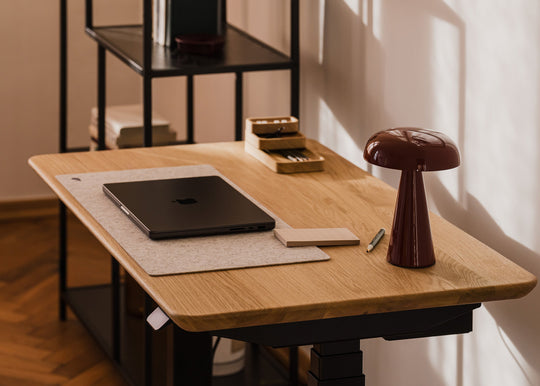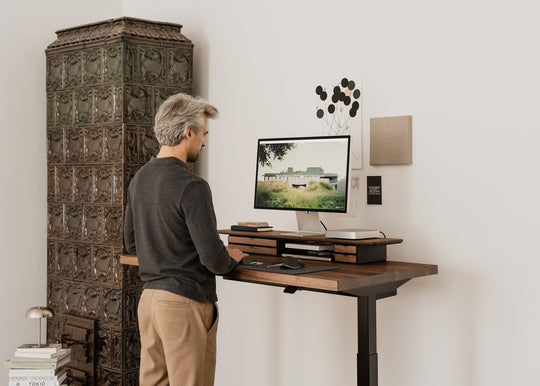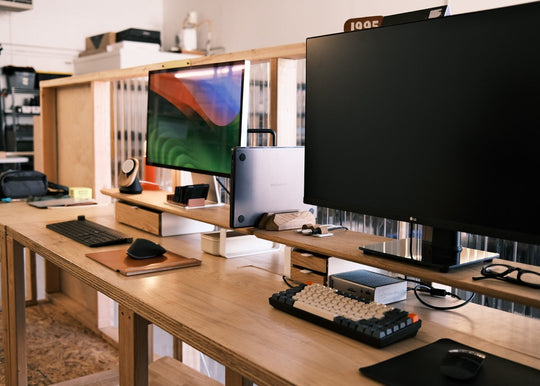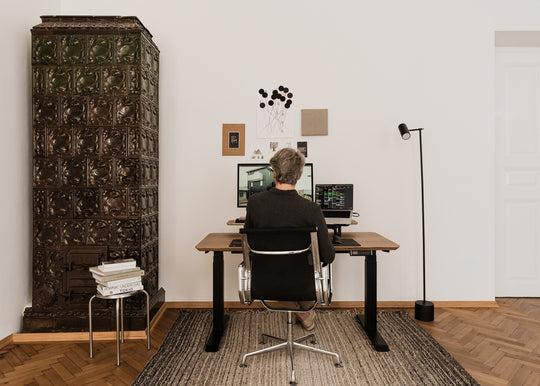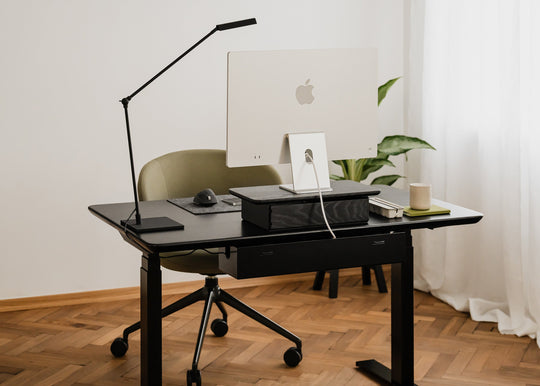
What do you need to know about office ergonomics?
Let’s be honest: the human body isn’t designed to sit at a desk and stare at a monitor in the same position all day long. Lower back pain, neck strain, dry eye syndrome – that’s just the tip of the iceberg. Whether you work in an office or remotely in your own home, workspace ergonomics is no trifling matter. We’ve gathered the most important information and consulted with an expert – physiotherapist Katarzyna Szargało-Szkałuba, to give you some useful tips on how to ‘ergonomize’ your workstation.

What is the correct monitor setup?
One of the most essential things to consider when setting up your workstation is the monitor height. This is because incorrect monitor positioning can cause many ailments, such as:
- eyestrain, blurred vision, and dry eye syndrome,
- musculoskeletal injury,
- neck strain,
- muscle tension disorders,
- muscle weakness,
- headaches.
According to various sources1, the top of the screen should be at or slightly below eye level so that you don’t have to bend your neck. It is also worth mentioning that the best way to place the monitor is directly in front of you. Another important parameter is the tilt of the monitor: your device should be open with the screen tilted back a little. Finally, the distance between the screen and your eyes is critical – the monitor should be about arm's length (approx. 51-60 cm) away from you.

How to ergonomically work on a laptop?
Remote workers, digital nomads, freelancers working from coffee shops or public libraries – many of us work on laptops daily. Is it actually possible to follow the rules of ergonomics in such scenarios? Kermit Davis Ph.D., a professor in the UC Department of Environmental and Public Health Sciences says that laptops are designed to be a rather short-term option, and not for everyday, 8 hour use2.
But what if you have no other option? Our physiotherapist’s advice is to “dance with a laptop” – change its positioning so that you have to move your body a bit more often throughout the workday. Another solution is to put the device on a laptop stand and plug in an external keyboard.
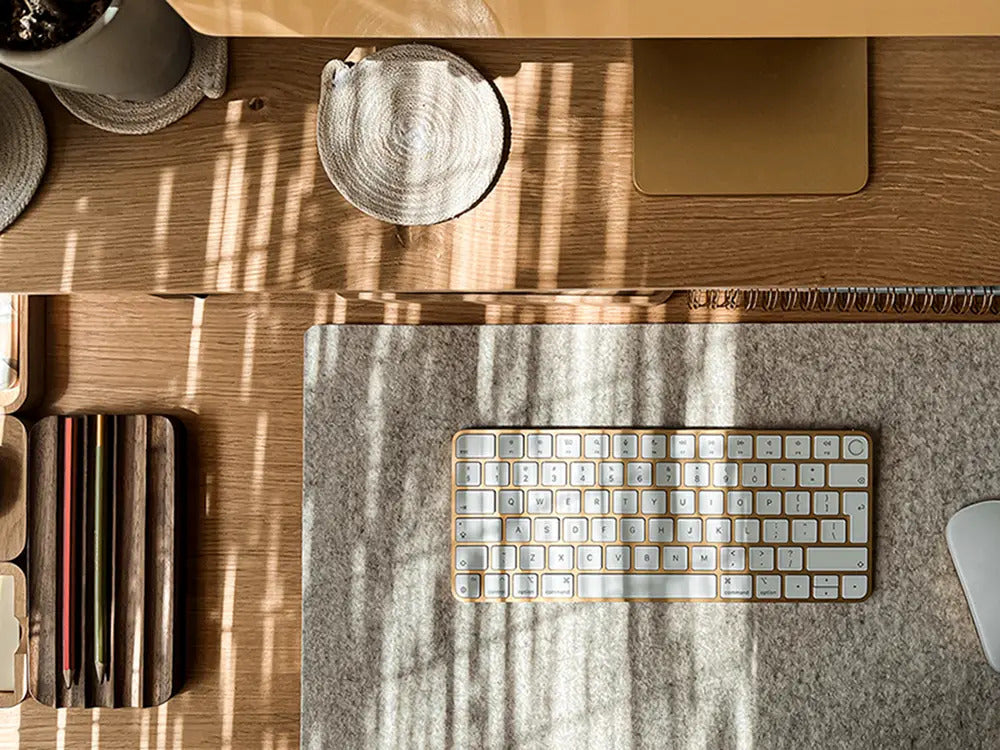
The adjustable desk
Another important factor to include while creating an ergonomic workspace is the correct desk height. Generally speaking, it should be based on an individual's height and posture. The best way to determine the optimal desk height for you is to experiment with different types of desks. When trying to choose the right one, you can help yourself with a simple trick: sit at the desk with your elbows bent to 90 degrees – your forearms should be parallel to the floor and rest comfortably on the tabletop. Another way to measure the perfect desk height is by using a desk height calculator (we’ve already mentioned it in another blog post). It’s a simple online tool that will calculate the recommended desk height, based on your stature.
If you want to bring your office ergonomics to an even higher level, you can invest in an adjustable standing desk. It allows you to change the position from sitting to standing and it’s also a form of physical activity. Alternating between sitting and standing throughout the day will help you improve your muscle strength and flexibility.

Photo by Laura Davidson on Unsplash
What about the desk chair?
The number of “ergonomic desk chairs” available on the market can be overwhelming – which one should you choose? One of the most important things is the right height: when it’s too high or too low, the pressure on the backs of your legs is increased which leads to bad circulation. The seat pan should be neither too shallow nor too deep because it may cause leg discomfort (especially thigh and knee pain).
When shopping for a chair, pay special attention to the backrest. Ideally, it should be shaped like a human’s back so that it can support your lumbar curve. Additionally, the backrest height should be adjustable.
Our expert, Katarzyna Szargało-Szkałuba, says that the best sitting position is always the next one. Therefore, the chair should allow us to fidget, to change position. You can also temporarily replace the chair with a stability ball or a saddle chair – it will help you vary the position of the pelvis.
One more thing to remember: even the most comfortable and ergonomic chair won’t make a sedentary lifestyle healthier. Sometimes you just have to stand up and move.
References:
https://ehs.unc.edu/workplace-safety/ergonomics/office/
https://www.researchgate.net/publication/328338658_Ergonomic_Diagnosis_of_a_Computer_Workstation
https://www.ccohs.ca/oshanswers/ergonomics/office/monitor_positioning.html
https://www.gvsu.edu/officeergonomics/computer-monitor-8.htm https://www.sciencedaily.com/releases/2020/07/200728150637.htm
